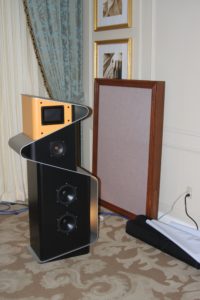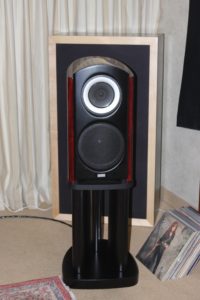What Is Good Sound?
Most recording engineer’s I know will work on a monitor or loudspeaker that achieves the sonic results that the engineer thinks is the desired sound. There are many factors that come into play on this choice, but most important is the experience the engineer has with that particular speaker. I know some engineers who will stay with there old monitors no matter what advantages the new technologies present. They know how their monitors sound and translate and they do not want anything to interfere with this process.
Different Speakers
I also know engineers that use different speakers. I see engineers using large, full range monitors for recording. These are large units that can have 15″ – 18″ low frequency drivers, and with multiple mid range drivers and high frequency tweeters. Mixing goes in a different direction. A mixing loudspeaker will be smaller and of lesser quality. In most engineer’s homes, I find a speaker that falls in between these two extremes in terms of size and quality.
Classical Recording
The classical recording world is all about quality. There is really no need in the classical recording world for the speaker to produce a “buzz” of its own for the musicians as in the popular music world. In classical music, the loudspeaker is relegated to a secondary position in the signal processing chain. Headphones for more clarity, sound isolation, and less room sound are desired. Use of electronic processing is also not as prevalent as it is with pop music. Why is there so much subjectivity in a situation that requires so much objectivity?
Loudspeaker Manufacturers
The loudspeaker industry could be partially at fault. If you ever look at the frequency response curves of today’s loudspeakers, one can see many inconsistencies comparing response curves. I do not think it is the loudspeakers. Engineers use speakers as just another tool in their acoustical palette. If one needs to focus on the middle frequencies, then there is a loudspeaker with those characteristics. A good detailed monitor for middle frequencies is critical because in the middle everything is competing for space to be heard in. Each music that is recorded will have certain sonic objectives and speakers are one of many acoustic tools that the engineer will use to achieve the engineer’s results.
Popular Music
With popular music, the final product must be viewed on a macro level, but one must use a micro approach to get this larger picture. Each track must be focused upon, so that the whole mix produces the sound the engineer is after. The sound the engineer has in his head is what the translation goal should be along with the clients. The client is using the particular engineer because he or she likes the engineer’s sound and that “sound” the client will go along way to achieving or even creating the sound that the client wants.
Sound Not Looks
Most engineers I know do not care about how a speaker really works. They are only concerned if that particular speaker will fit into their acoustical requirements. They also have different speakers at home then those they have at work. Hi-fi speakers are chosen for home because they are not so analytical and reproduce sound that is more compatible with the acoustics of the room. Sometimes I see consumers who use studio monitors because they want to hear everything that is in the music and not the room.
Too Much Subjectivity
All of this subjectivity does not go along way to achieving any objectivity or standardization towards good quality sound. Individuals want to hear certain things and certain sounds. Do we have a perfect monitor that everyone would consider as the standard? Probably not because individuals would still use whatever monitor they needed to achieve the sound that they wish to create. The Yamaha NS10M would not have the popularity over all these years if the trend was moving away from it.
Wrong Trends
Recording equipment is expensive. Using a full working studio with multiple rooms is not cheap. The equipment that is used in these studios is getting expensive and the trend does not seem to be working its way to cheaper gear that would be more excessive to more people. Software has become cheaper but the gear to play it on is not. Monitors are always apart of a larger budget and must have their place in the overall studio cost structure. Speaker manufacturers have keyed in on this phenomenon.
Marketing / Performance
Most speaker manufacturers design a speaker that they think they can sell at a particular price point. They pick a price range they believe is empty and fill it with a speaker that is designed with components to fit into that particular price point. This marketing philosophy does not lend itself to moving the science of speakers and in particular studio monitors forward. There is little technical improvement in monitors. Sound quality may not even be the selection priority. It could be because of appearance, weight, or features and benefits.
Where Is The Standard?
We need more objectivity in the recording process especially when it comes to our monitors or loudspeakers. They are the final link between our ears and all the electronic data that was used to create the recorded signal. We need a standardization for both recording monitors and playback speakers. A well defined reference for sound quality must come from both engineers and speaker manufacturers. From what I see manufacturers doing, it must be the engineers that put this standard into place.







